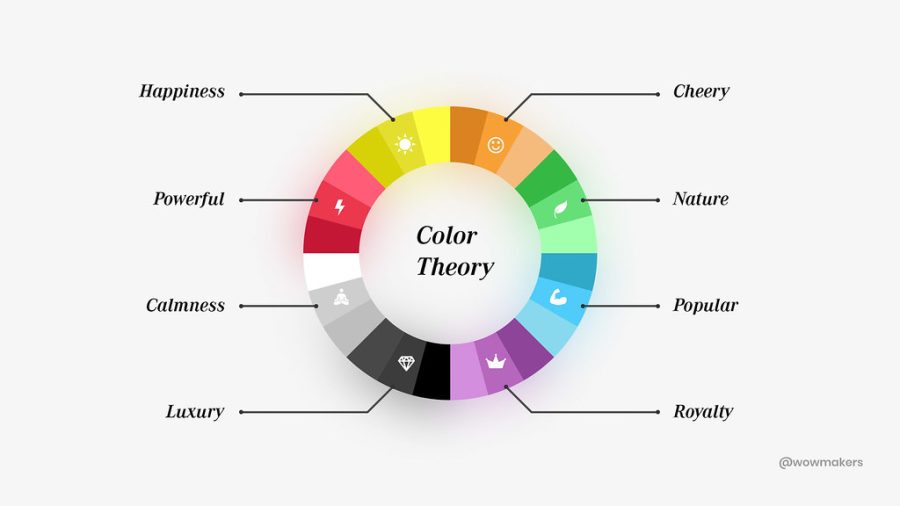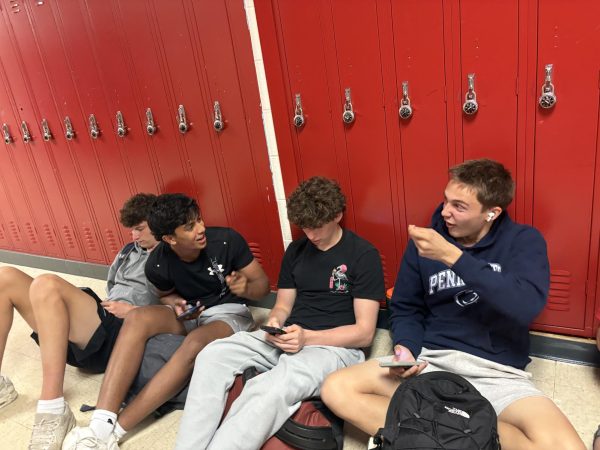Math is red
Photo used with permission from Google Creative Commons
A chart displays basic color theory, which suggests that every color has a set of emotions or feelings that the human mind commonly associates with that color.
There is a theory that no two humans see color exactly the same. Color, in all its glory, might be nothing more than a pigment of our imagination, but regardless of whether this theory is cyantifically proven, it remains a fact that color holds incredible meaning in life. Even in school color plays a subconscious role in students’ lives: we categorize classes by color sometimes without even realizing it.
Red is a color often associated with love and anger, due to hearts being red, people’s cheeks flushing red when angry and the common saying of ‘seeing red’ in a fit of madness. “I associate my math class with red because red is the color of angriness,” junior Allison Yu said, “And it makes me very angry when I have to do math.”
The color red has been scientifically proven to make people tense, upset, or mad, but aside from these emotional connections, students also rely on physical associations when linking classes with colors. “I think math is red because whenever I do poorly in math, it’s always red x, red x, red x, all over my paper,” junior Clarissa Miranda said.
Another color-to-class connection students agree on is that science is green because many types of science involve plants, and plants are green. Other students have deeper connections between the class and the color they associate it with. “Science has always been the only class which is actually engaging to me,” sophomore Margo Brown said, “Green means go, and science is the only thing I want to pursue. Science, green.”
However, when it comes to other core classes, opinions are divided. For history, students who enjoy the class will associate it with their favorite color, because they experience the same serotonin rush in a class they enjoy as when they see their favorite color. Conversely, brown is also a common color associated with history. “I think history is the color brown because old books, history books, are usually brown,” junior Selena He said.
Her logic is used to justify history being associated with other colors, too. “Old documents and parchment turn yellow with time, so I’ve always associated history with tan or yellow,” Brown said.
English, in particular, is a class that students hold vastly different opinions about. Those who find English calming and easy associate it with the color blue – a calm, cool color. Meanwhile, students who dislike English class also associate it with blue, but for different reasons. “English is blue because it’s very boring and sad,” Miranda said.
On the other hand, there are also students who disagree entirely about the color of English. “I associate English with white because it’s the color of paper, and we get a ton of papers in English class,” Yu said.
Other students feel that English is neither blue nor white. “In my freshman year I had my folders color coded. English was my third period at the time, and yellow is the third color in the rainbow, so English has been yellow for the past three years,” junior Nicole Yu said, “Also, my English teacher makes me annotate a lot, and I use yellow highlighter.”
Like Yu, students frequently assign colors to classes based on the subject folder they keep for assignments from that class. “English is blue because this is what I decided in elementary school and it hasn’t changed,” senior Leo Hertzler said, “Because English is blue and why would it be anything else?”
Your donation will support the student journalists of Thomas S. Wootton High School. Your contribution will allow us to purchase equipment and cover our annual website hosting costs.
Catie is a 2023 graduate.







